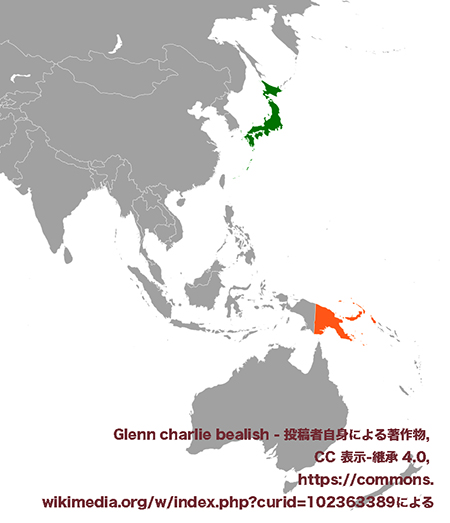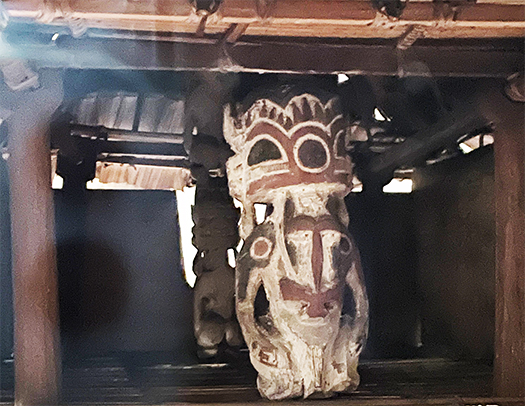


わたしは少年期の最後に政治少年化していた時期がありました。ちょうど70年安保闘争期だったので、そういう時代の空気感の中で揺籃されていたのでしょう。そういうなかで体験や心理の葛藤なども経験した結果、読書傾向としてそれまでの「大江健三郎」的価値感から自分を解き放つ道を選択してきました。その導き役として司馬遼太郎の「歴史観」に救われた、という感覚を持っています。
別に大江さんを全否定するわけではないけれど、ちょうど「解脱」するような感覚と共に司馬遼太郎的な歴史探訪、その丹念な民族史の掘り起こし姿勢に深く癒されていたといえます。誤解されることを怖れずに言えば、人に対して憎悪を持つことから離脱して、平明に人を受け入れることを選んだ、みたいな心理でした。
政治運動から距離を置いて、ごくあたりまえの人間観に救済されたと。
で、司馬さんの膨大な作品世界にしずかに身を委ねて、歴史上の人物たちとの対話をしてきた。
そういうなかで、いくつかの「建築と人間」という要素について司馬さんの探究心が発揮されたテーマを感じ続けていました。そういうなかで印象的なものが「若衆宿」日本文化だと思います。
若衆宿というのは、古層からの日本文化に根付いている文化であり、村落の未婚の若者が夜集まって仕事をしたり話し合いをしたりして親睦をはかり、寝泊まりをする宿所。一般的に男女別でとくに日本の男子は一種の「通過儀礼」として少年から大人になっていく倫理感などを叩き込まれる建築空間。
司馬さんも西郷隆盛という人物の分析にあたってこのことに深く拘泥したことがわかる。薩摩藩の中の郷中組織という典型的な若衆宿、その郷中頭に何度もなったのが西郷隆盛。その後、街道をゆくシリーズ「熊野・古座街道」で、司馬さんが熊野を歩かれた時のこと、深い谷間を歩き、渓流の音を聞きながら、司馬さんはかつてそこにあったに違いない若者宿のことについて思索を巡らし始めている。そして南方の島々の慣習がこの日本列島に及ぼした影響の一つではないか、つまり南方起源説を仮説として掲げているのですね。
そんな漠然とした知見を持っていて、わたし自身も自分の学生運動を経験したことと重ね合わせて「若衆宿」という日本文化の基層から深く影響されたと思うのです。若さの特権とも言えるけれど、大人にはなりきれていない「通過儀礼」のような印象でしょうか。
そういった成り行きで、たまたま参観したことがある東京国立博物館・東洋館の一展示写真のことが深く思い起こされた。その参観撮影時には気付かなかったけれど、最近写真整理の時間を持てて、この写真の「ハウスタンバラン」<精霊小屋>を再発掘した次第。まさに「これじゃん」であります。
やはり日本文化には色濃く、南方アジア島嶼起源の精神性があるのだと思えたのですね。今後、こういう部分をすこしづつ掘り下げていって見たいと気付かされた次第です。
English version⬇
Japan’s “Wakashu Inn” and Papua New Guinea’s “Spirit Hut
The New Left Movement of my youth was deeply rooted in the spirit of the Wakashujuku of old Japan. This project is an effort to carefully dig up such traces. Cultivation of the ability to make calm judgments. The cultivation of a sober judgment.
There was a period at the end of my youth when I became a political boy. It was right around the time of the 70-year Security Treaty struggle, so I must have been cradled in the atmosphere of that era. As a result of my experiences and psychological struggles, I have chosen to free myself from the “Kenzaburo Oe” sense of value that I had been reading up to that point. I feel that I was saved by Ryotaro Shiba’s “view of history” as a guide.
It is not that I totally reject Mr. Oe, but I can say that I was deeply healed by Ryotaro Shiba’s historical exploration and his meticulous approach to digging up ethnic histories with a sense of “liberation”. Without fear of being misunderstood, it was a kind of psychological detachment from hatred toward people, and a choice to accept people in a peaceful manner.
He said that he had distanced himself from political movements and had been rescued by a very ordinary view of humanity.
So, I surrendered myself peacefully to the vast world of Mr. Shiba’s works and engaged in dialogue with historical figures.
In this context, I kept sensing several themes that demonstrated Mr. Shiba’s inquisitive mind about the elements of “architecture and human beings. One of the most impressive of these themes is the “wakashu yado” Japanese culture.
Wakashu-juku is an inn where unmarried young people of a village gather at night to work, discuss, and socialize, and where they sleep and stay together. Generally, men and women are separated, and Japanese boys in particular are taught the ethics of becoming an adult from a boy as a kind of “rite of passage” in this architectural space.
It is clear that Mr. Shiba was deeply concerned about this when he analyzed the character of Saigo Takamori. Saigo-Takamori was a typical young innkeeper in the Satsuma clan’s Gochu organization, and he became the head of the Gochu several times. Later, when Mr. Shiba walked in Kumano in his Kaido Yuku series, “Kumano/Koza Kaido,” walking through deep valleys and listening to the sound of mountain streams, he began to ponder about the youth inns that must have once existed there. And you hypothesize that it may have been one of the influences of the customs of the southern islands on this Japanese archipelago, in other words, the theory of southern origins.
With such vague knowledge, I think I myself was deeply influenced by the base of Japanese culture called “wakashujuku,” overlapping with my own experience of the student movement. I guess you could say that it is a privilege of being young, but it gives the impression of a “rite of passage” that does not quite make one an adult.
This led me to think deeply about a photo exhibit in the Toyokan (Asian Gallery) of the Tokyo National Museum, which I happened to have visited. I did not notice it at the time of the visit, but recently I had time to reorganize my photos and rediscovered the “Haus Tambourin” (Spirit House) in this photo. This is exactly what I was looking for.
I was able to see that the Japanese culture has a strong spirituality of the southern Asian island origins. I am now aware that I would like to delve a little deeper into this aspect of Japanese culture in the future.
Posted on 3月 21st, 2024 by 三木 奎吾
Filed under: 日本社会・文化研究







コメントを投稿
「※誹謗中傷や、悪意のある書き込み、営利目的などのコメントを防ぐために、投稿された全てのコメントは一時的に保留されますのでご了承ください。」
You must be logged in to post a comment.